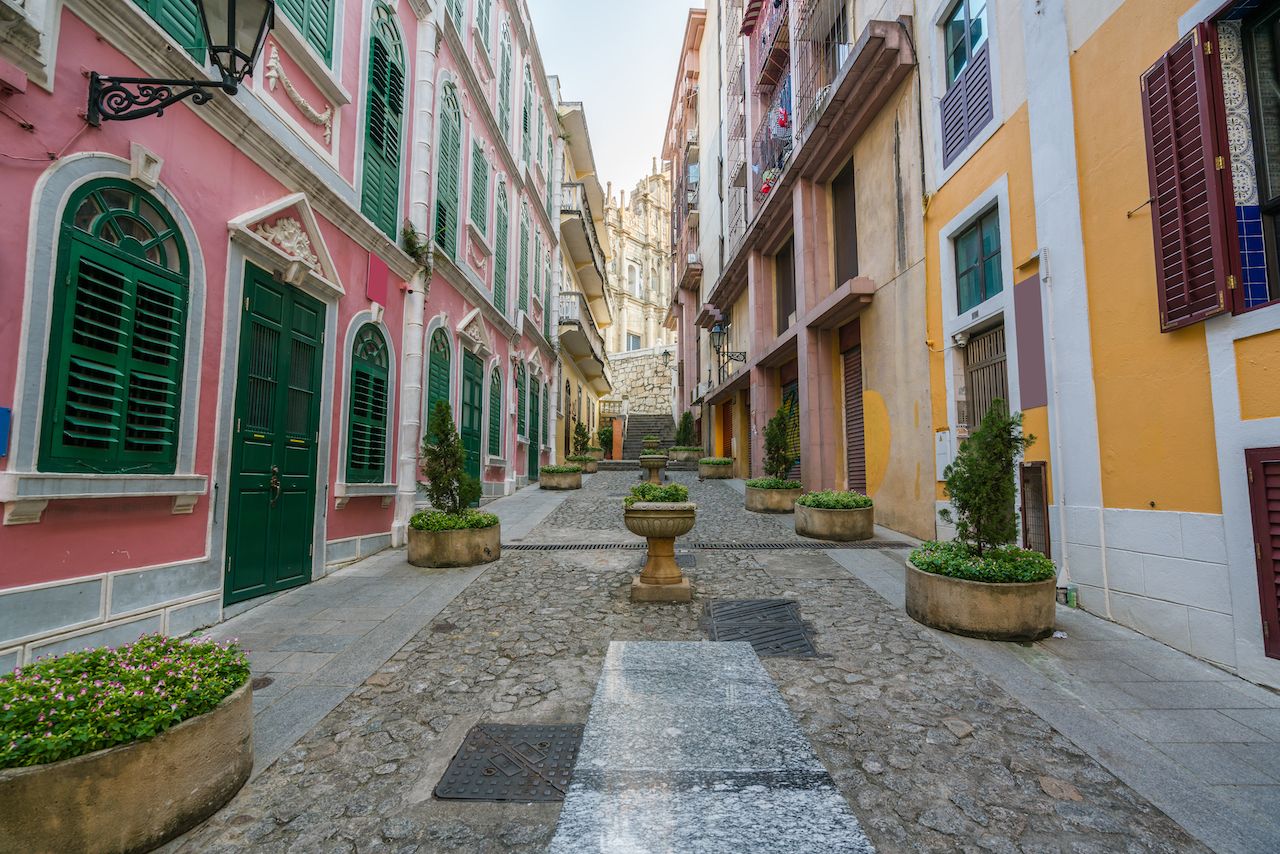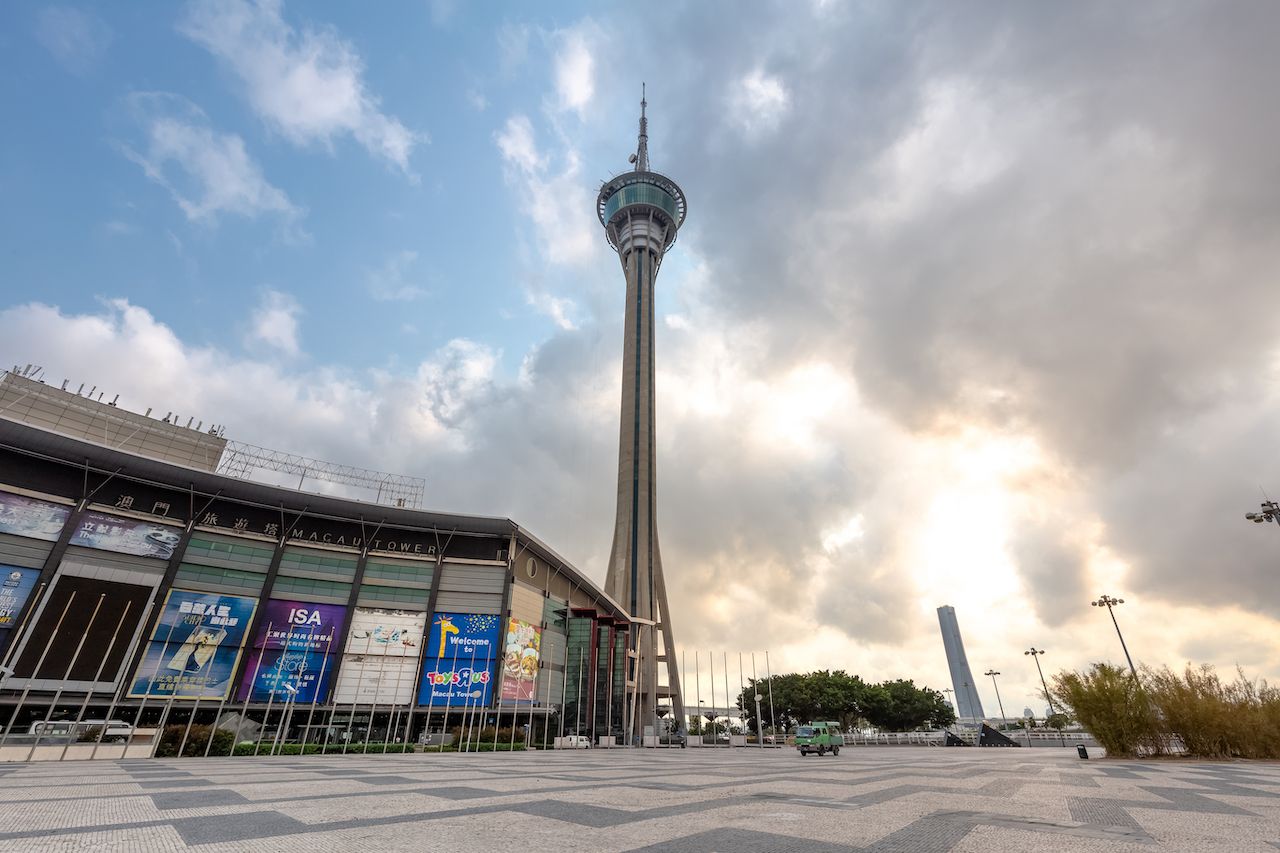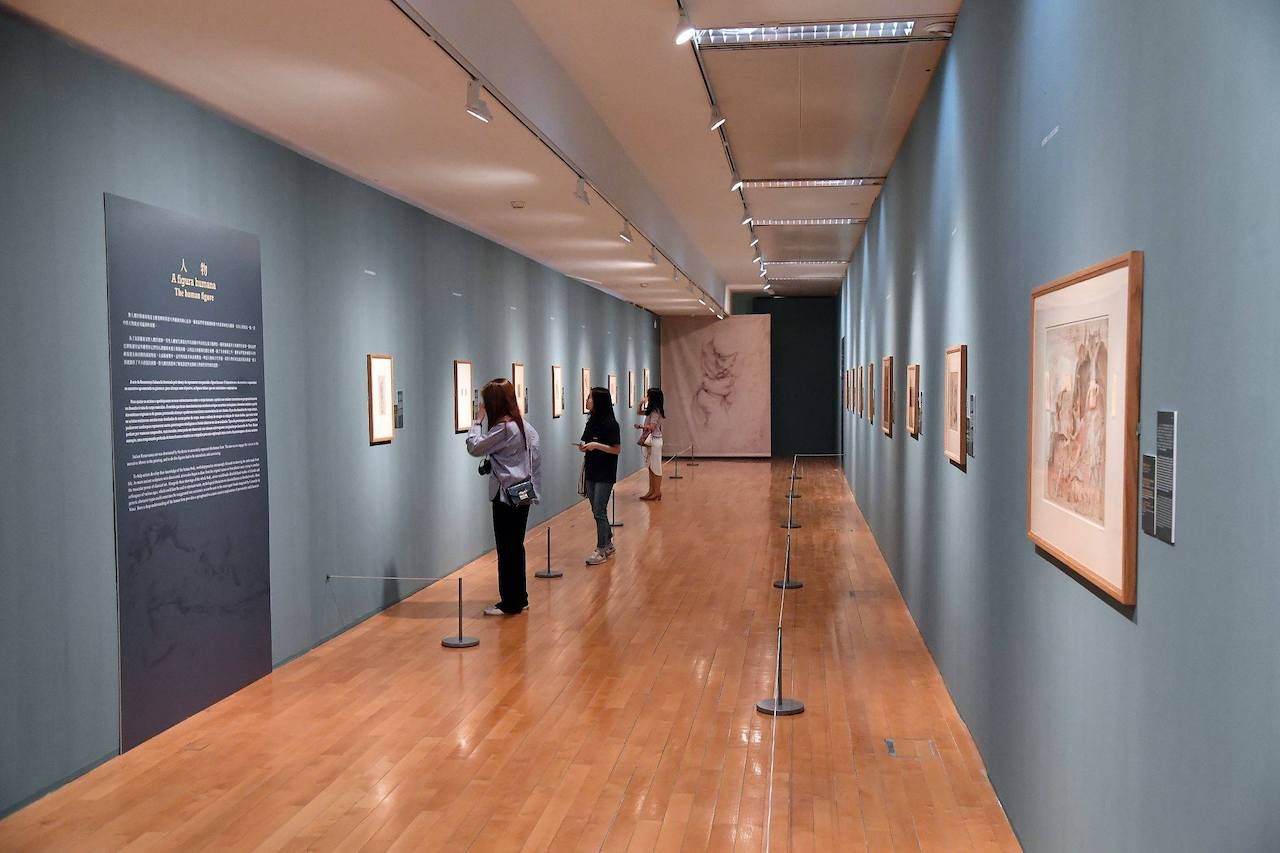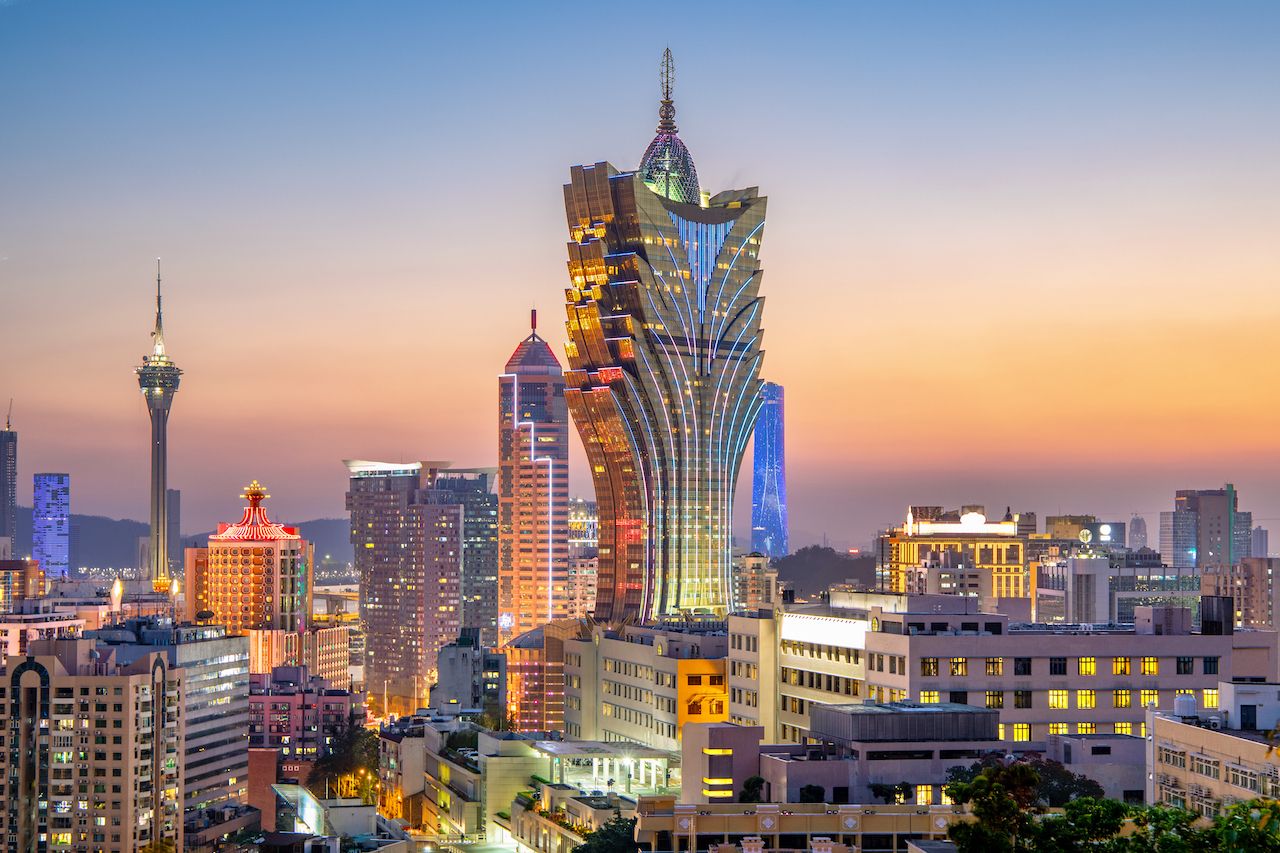To Buddhist practitioners, the lotus flower symbolizes purity and ascension. The lotus is found nearly everywhere in Macao these days — the perfect testament to the city’s emergence from Portuguese colonialism in 1999. Yet while much of Macao’s success has come from its role as global gambling hotspot, it would be a shame to come to these islands and spend all your time in its more Vegas-like zones.


The reality is that gambling is just one part of the scene in this Special Administrative Region of China. Macanese pride and culture are the real offerings, and you don’t have to wage bets to experience them. From the new Art Macao installation to the city’s 19 Michelin stars and status as a UNESCO City of Gastronomy, Macao is a city with a history as rich and diverse as its cuisine. And unlike its card-throwing counterpart in the Nevada desert, it’s actually quite easy to to make your way outside of the casinos here — which you should do, because that’s where you’ll find the real Macao.
Over four days, Ken Chi Hou Lee with the Macau Government Tourism Office led me through the city, illuminating its nuanced layers of Buddhist tradition, Christian imperialism, and the influence of both Eastern and Western rulers who’ve sought to lay claim to this sultry set of islands in the Pearl River Delta. (As to spelling, you’ll see Macau and Macao used apparently interchangeably. We’ve gone with Macao, as it’s generally accepted as the English spelling, while Macau is the Portuguese lettering.) Here’s how to make the most of your trip here.
When to visit

Photo: Travelerpix/Shutterstock
The best time to visit is in the fall, after the monsoon season has run its course, up until the annual Light Festival in December. Absolutely do not come during Chinese New Year in late January as the city is overwhelmed with visitors from the Chinese mainland and prices are at their peak. I arrived in late June, in time for the summer heat but off-peak for many tourists from mainland China.
No matter when you come, it’s going to be humid. In coastal South China, rain appears seemingly out of nowhere and fills the sky quite suddenly with moisture, though the rain often disappears before you can duck for cover underneath a storefront veranda. Still, Macao is the perfect city to take in on foot. Dress for both heat and rain, and if you carry a notebook as I do, expect the pages to adopt a light tug of sogginess — not unusable, just markedly moist. You can cover most of the city in two days, starting with the city center on Macao Island.
Macao Island

Photo: Jimmy Yan/Shutterstock
The 1,109-foot-tall Macao Tower offers a panoramic view of the entire area. If you’re feeling particularly limber, the world’s highest commercially operated bungee jump also leaps off the top of the tower. The entire Historic Center of Macao is UNESCO-protected, one of five UNESCO statutes the city has received.
Start your walk in Camões Garden. This 215,000-square-foot garden is adjacent to a section of historic row houses, including the home of 16th-century Portuguese poet Luís de Camões. Nearby is St. Anthony’s Church, one of the oldest and most historic colonial-era churches in the city, and Mount Fortress, where the Dutch fell to the Portuguese in 1622 in the Battle of Macao.
“We didn’t always have a good relationship with the Portuguese, but they did protect us from the Dutch,” Chi Hou Lee, a lifelong resident of Macao, told me when I asked about anything positive that had come from colonization. “Still, it was like they asked for a bite and ate the entire town. Originally, the government allowed this. But when [the Portuguese]… turned the cannons on us, everything was different.”

Photo: Tim Wenger
Walking through town, you’ll pass a section of the old city wall that enclosed the now-historic center. Though the wall is not in the condition of what you’d see in Chiang Mai, Thailand, or Quebec City in Canada, it’s worth stopping at to examine because you’re not going to see oyster shells in the wall of any other city.
Among the area’s most historic sites is the Ruin of St. Paul’s. The Portuguese built St. Paul’s Cathedral in the Santo Antonio district in the 16th century as part of their efforts to impress their religious beliefs upon the locals. It’s even eerier than you’d expect a 500-year-old church to be since the bones of the missionaries who built, ran, and maintained the church are on display in what was and is an actual crypt underneath the church.

Photo: Wang Sing/Shutterstock
These days, all that survives is the front-facing facade of the original church and the crypt, with the museum behind it. It’s an intense place to be, and tears are as common as selfie sticks among the visitors passing through. The site gained UNESCO status because it is the only place where a church of such importance stood next to a Buddhist temple of equal significance. As an outsider, your role is to be respectful of those there for religious purposes. Na Tcha Temple, adjacent to the Ruins of St. Paul’s, is the most important site in the city for many Macanese.
Beyond walking through the historic center, the best way to gain an understanding of the city’s colonial history and impending assimilation with China is to visit the Handover Gifts Museum. When Portugal gave back control of the city to China, Chinese provincial and local governments from around the country offered custom-made welcome gifts that are now housed here in the museum. These ranged from hand-crafted rugs to hand-made vases and other intricate works of art often built of materials, such as jade, that are of significant importance in Chinese history. The craftsmanship and attention to detail in each piece is astounding. The lotus plays as large a role in the museum as it does throughout town, as does the year 1999 — the year of both the handover and of the rabbit in Chinese mythology.
Taipa, Coloane, and Cotai

Photo: eXoxideZ/Shutterstock
On your second day, you should cross the Ponte da Amizade bridge to the Taipa area, where you can experience a bit of Macao as it’s always been. The streets here are historical Macao at its most pristine, lined with colonial-era buildings comprising residences, shops, and food stalls. The streets of Senado Square are laid with stones unloaded from their spice boats in the traditional Portuguese colonial style: a wavy pattern of black and white. Rua de Cunha is known locally as Food Street, as it’s home to just about every type of street food vendor imaginable. Head here for almond cakes, multiple varieties of dried jerky meats, and peanut candies.
Coloane is your port of call for the slow, leisurely pace of the Macanese lifestyle, the kind Chi Hou Lee ensured me was there to kick to the curb any who say the city is but the Vegas of China. Here, shopkeepers peddling everything from clothes to electronics to egg tarts populate old storefronts, and diners sit over lunch and beers at outdoor cafes.
In between Taipa and Coloane, Cotai is the site of much of the newest hotel and casino development. Here you’ll find sprawling complexes such as Galaxy and City of Dreams, where multiple hotels, malls, and entertainment complexes are brought together under one roof.
Visit the markets and check out the art

Photo: Sanga Park/Shutterstock
For hundreds of years prior to European contact, Macao was a small fishing village called Hao Jing. The Portuguese first arrived in the 16th century near what is now the A-Ma Temple, originally using the area as a rest stop and a place to dry and store goods on their way to other parts of China. But by 1557, Portugal began to establish a full-on settlement in Macao, paying a small annual fee to the far-flung government of China’s Qing Dynasty. Portugal’s influence increased, as more Portuguese settlers arrived and Portugal imported African slaves into Macao. Portugal considered Macao a colony from 1557 to December 20, 1999, when it handed the city back to China. During this time, Portugal brought in its people, their customs, and religion.
The best place to peel back the layers of its seaside-village past is at a local fish market, where the way of doing business hasn’t changed much for hundreds of years. More accurately, these are called “wet markets” as Macanese prioritize the freshness provided by seafood vendors who hawk fish that are still alive and squirming. It is believed here that this values the life of the fish, and your first stop in old Macao should be the Red Market to experience this firsthand. Whether or not you actually make a purchase, nowhere in town holds the tradition of Hao Jinq quite like this old town market.
“We’re kind of like a small town, I see people I know every time I come here,” Chi Hou Lee said as we sat over a pot of tea, then another, and then a third at Wong La Teahouse across the street. Not that I’m a dedicated tea drinker, but even hot tea and dim sum was a good respite from the crushing humidity that had soaked my clothes after a walk through the market.

Photo: Macao Museum of Art/Facebook
Tradition lives in the markets, but the Macanese showcase their vision for the future through art. This tight-knit city has recently banded together around a citywide art installation called Art Macao to bring in local and international works, which debuted in April. The main exhibit has taken over multiple floors of the Macao Museum of Art across Macao Island from the Red Market.
Abstract — and often quite large — works from international and national artists are on display, curated by the city’s Secretariat for Social Affairs and Culture. Many are digitized, meaning they incorporate digital aspects broadcast on massive LED screens in an effort to “contribute to the promotion of high aesthetic sense and humanistic spirit,” as Dr. Alexis Tam, the Secretary, said in a press release. Art Macao’s 2019 season runs from April to October, though some art pieces in the hotels are permanent, and the program’s success means more may be in store in 2020.
The most impressive exhibits are actually located inside hotels across the city, so don’t stop your art tour after the museum. Head to the brand new Morpheus, where sculptors have stationed massive works representing Macao’s growing presence on the global stage. A giant moose statue known as “Good Intentions” greets you on the hotel’s 23rd floor, and the elevator ride up the world’s first free-form, exoskeleton-bound high-rise is equally impressive. The MGM Cotai hosts an expansive collection of traditional Chinese rugs, viewable on a daily tour through the facility, with sculptures placed throughout their expansive facility.
Eat as much as possible

Photo: SIHASAKPRACHUM/Shutterstock
Macao’s population doubled during World War II, primarily with mainland Chinese residents forced out by turmoil. The Chinese brought with them a culinary culture that has combined with Portuguese influence to create modern Macanese cuisine. To be truly Macanese, it is said, one must have both Chinese and Portuguese in their heritage. The World War II generation was the first to physically embody this, and Macanese kitchens are how they express this unity in a consumable fashion.
The city’s thick air holds the scent of turmeric and Chinese five-spice powder, mostly because there is undoubtedly someone preparing dim sum within a few steps of wherever you are. Macao eateries and dining rooms have 19 Michelin stars between them, and in 2015, Macao became recognized as a UNESCO City of Gastronomy. Top Chef even filmed its most recent season finale here. The everyday hawker has as much to do with that recognition as the celebrated high-end chef, though. It is in this way that Macao is reminiscent of global street food hubs like Bangkok. The diverse cuisine that runs its streets is the lifeblood of the city.
Traditional Macanese food draws on Portuguese cooking methods but extends beyond colonial times to include Chinese ingredients and African spices, such as in the appropriately named African Chicken, a blackened and heavily spiced whole bird with its roots in Mozambique but its name on menus across the city. As in much of China, you will see two pairs of chopsticks at your place setting. This is because many meals in China are shared. The pair on the outside of your napkin is for pulling food from community platters onto your own plate, while the pair on the inside — closest to your plate — is for moving the food from plate to mouth.

Photo: tdee photo cm/Shutterstock
The most famous dish from the city is the Portuguese egg tart, which originated in the ovens of Lord Stow’s Bakery in Coloane. You can still get the original there, but nearly every food vendor in town sells them. Chinese Hot Pot is also a big deal here, and you’ll find the best at Lotus Palace inside the Parisian.
Beijing duck is another must-try, if only to learn how to properly consume nearly every part of a single duck in one sitting. It comes both fried and grilled — you’ll be served both — with accouterments including thin pancakes to wrap it up in. The skin is served separately, crispy fried so well that you’ll never be able to eat store-bought fried pork skins again. Find the dish at Beijing Kitchen inside the Grand Hyatt, but call in advance to order yours as it’s not available on the order-in menu. Drink Macanese Sangria at some point during your stay, too. Available at most Porto-Macanese restaurants, it’s made with Portuguese wine mixed with gin, vodka, draft beer, and fresh fruit. It’s a lovely remedy to Macao’s hot, muggy afternoons.
A city ready to welcome the world

Photo: Sean Hsu/Shutterstock
In 2002, the city opened casino investment to foreign markets. The Sands Macao casino-hotel opened in 2003, becoming the first international casino brand to invest from overseas and luring brands like Wynn and Galaxy to followed. The city-state has just 650,000 residents but now sees three million visitors per month. As you might imagine, this generates a lot of revenue for the government. Every citizen receives an annual stipend, known as the WPS, that is essentially a basic income to be used for general wellbeing.
Macanese have embraced the job market kickstarted by the casinos that now extends across the whole of the city’s economy, resulting in an unemployment rate of just 1.5 percent and a populace that has largely lifted itself out of poverty. This, understandably, has many residents in favor of development and growth.
“When I was growing up, we were very poor,” Chi Hou Lee said. “But now, because of the growth, I have my own car. I have my own apartment. Some people prefer the old Macao, but many see the benefit of the growth, especially in my generation.”
Though Macao’s status as an independent city-state stands until 2049, China’s presence is increasingly felt. You can actually see mainland China’s slow encroachment from most parts of Macao. New high-rises regularly pop up across the Maliuzhou Waterway in Zhuhai as if to say, “Hey, we’re right here, and you belong to us.”
That said, the Macanese I met seemed less concerned about the forthcoming assimilation with China than their neighbors in Hong Kong. “For us, we say we are both Macanese and Chinese,” Chi Hou Lee said. “People accept that it is part of China. A common theme is that, who cares who is governing if we have good jobs? If we have everything we need?” An opinion not shared by all, for sure, but a sign that most of Macao is eager to grow, open to change, and confident that no matter what happens, they’ll continue to retain the unique aspects of their culture that have always made visiting this region so special.